Disclosure: This article contains affiliate links. We may earn a commission from purchases at no extra cost to you, which helps our travel content.
There's something magical about Ireland in the fall—something that transcends what my camera can capture but keeps me coming back to try anyway. The emerald hills transition to amber and gold, the morning mist hangs a bit longer over ancient stone walls, and Dublin's streets are less crowded with tourists but still buzzing with life. It's been five years since I first brought Emma here, just months after losing her mom. We were both searching for something—healing, connection, maybe just a change of scenery. What we found was a country that seemed to understand grief and celebration in equal measure, where stories of loss and rebirth are etched into the very landscape. Now I return annually, sometimes with Emma when her college schedule allows, sometimes solo with just my camera as companion. This fall's journey from Dublin's literary lanes to the mystical Wicklow Mountains reminded me why Ireland remains my soul's true north when it comes to photography. Let me take you along this visual pilgrimage, where each frame captures not just light and shadow, but the heartbeat of a land that has taught me to see beauty even through tears.
Dublin Through a Photographer's Lens: Beyond the Postcard Shots
Dublin isn't just a city—it's a storyteller with countless tales waiting to be framed. While tourists flock to the Temple Bar for that iconic Irish pub shot, I've learned that Dublin reveals its true character in the hours when most visitors are still sleeping.
My photography days in Dublin always begin before dawn. There's a sacred quality to the city at 5:30 AM when the streets of Trinity College are empty, and the Long Room library stands in silent grandeur waiting for first light to filter through its windows. This trip, I positioned myself at the Ha'penny Bridge just as the morning fog was lifting off the Liffey. The way the emerging sun caught the ironwork created a golden skeleton against the blue morning light—a shot worth the numb fingers from the autumn chill.
For street photography, I've discovered that Dublin's best canvas isn't on the main thoroughfares but in neighborhoods like The Liberties or Stoneybatter. Here, generations of Dubliners go about their morning rituals: shopkeepers arranging produce, elderly men gathering for their daily constitutional walks, children in school uniforms navigating cobblestone streets. These unguarded moments tell Dublin's authentic story far better than any landmark shot.
One morning, I spent three hours just photographing doors in the Georgian district. Dublin's famous colored doors each frame a different story—some freshly painted in bold blues and reds, others weathered to a perfect patina that no filter could improve. I use my 24-70mm lens here, which gives me versatility without having to constantly change equipment on these walking shoots.
The real photography secret in Dublin isn't finding new angles for famous sites—it's finding patience to wait for changing light. I've stood at Christ Church Cathedral for over an hour, watching as passing clouds transformed the stone from cool gray to warm honey. This is where meditation becomes my photographic superpower—the ability to simply be present and wait for the perfect moment rather than forcing it.
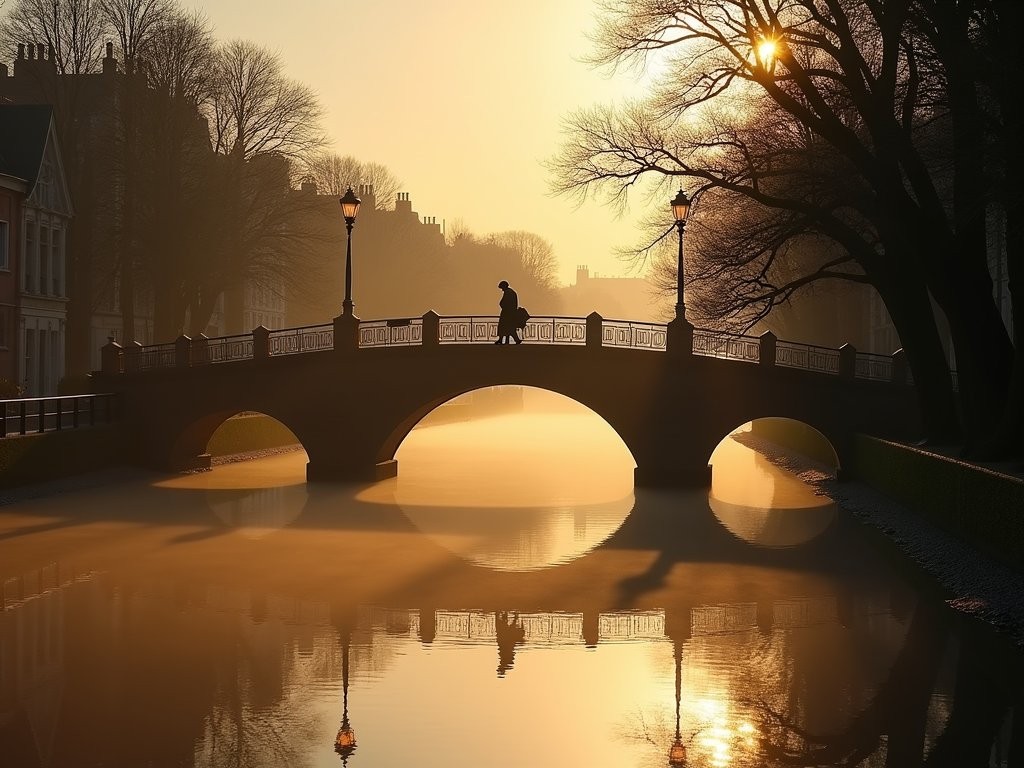
💡 Pro Tips
- Visit Dublin Castle's grounds at first light (around 7:30 AM in fall) for dramatic shadows and empty courtyards
- Use a polarizing filter when shooting the River Liffey to cut glare and enhance the reflection of colorful buildings
- Dublin's weather changes rapidly—keep a microfiber cloth in your pocket to quickly dry your lens between rain showers
The Technical Side: Gear and Settings for Irish Light
Ireland's light is notoriously fickle—a photographer's greatest challenge and most precious gift. One moment you're shooting in flat gray overcast, and minutes later golden rays break through to create dramatic spotlights on the landscape. This temperamental quality demands both technical preparation and flexibility.
My gear setup has evolved over years of Irish photography trips. While I once lugged every lens I owned across the Atlantic, I've learned that a thoughtful minimalist approach serves me better. My current kit centers around my full-frame mirrorless which handles the dynamic range of Irish landscapes beautifully. The weather sealing has saved me countless times when sudden showers appear out of nowhere—something that happens with delightful regularity here.
For lenses, I bring three workhorses: a wide-angle 16-35mm for landscapes and architecture, the versatile 24-70mm for street photography, and a 70-200mm for isolating details in the Wicklow Mountains. The telephoto becomes particularly valuable when the weather creates those mystical layers of fog between rolling hills—allowing me to compress the scene into something almost painterly.
Filter-wise, Ireland demands a good circular polarizer to cut through water reflections and enhance those impossibly green hillsides. I also never travel without a 6-stop and 10-stop ND filter for those long exposures of the Irish Sea or mountain waterfalls. The filter system I use allows quick changes as lighting conditions shift, which happens constantly here.
Camera settings require constant attention in Ireland. I typically shoot in aperture priority (usually f/8-f/11 for landscapes to maximize depth of field) but keep a vigilant eye on shutter speed. The wind in Ireland—particularly in the Wicklow Mountains—can turn a tripod into a wobbling mess if you're not careful. I've learned to increase ISO rather than risk blur from vibration, especially since modern sensors handle noise so well.
One technical tip that's served me well: bracket your exposures when shooting Irish landscapes. The difference between the bright sky and shadowed valleys often exceeds what even the best sensors can capture in a single frame. Later, blending these exposures in post-processing recovers both shadow detail and cloud texture, creating images that more accurately reflect what your eye actually saw.
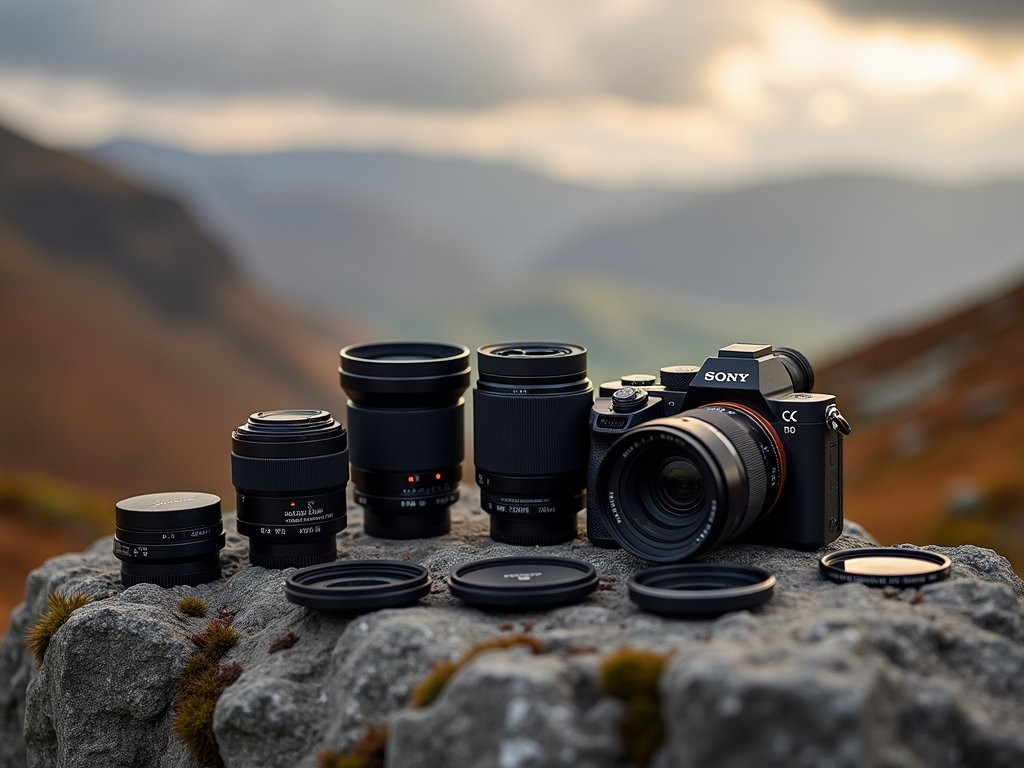
💡 Pro Tips
- Set up custom shooting modes on your camera for quick transitions between Irish landscape and street photography settings
- Always underexpose slightly (by about -0.7EV) when shooting Irish landscapes to preserve cloud detail
- Use your camera's electronic level religiously—the rolling topography can easily create crooked horizons
Glendalough: Where Light and History Converge
If there's one location in the Wicklow Mountains that calls to my photographer's soul, it's Glendalough. This ancient monastic settlement nestled between two lakes (the name literally means "valley of two lakes") offers such rich photographic diversity that I dedicate at least two full days to it on every Irish journey.
The first time I brought Emma here, she was thirteen and reluctantly dragging her feet behind me on the trail. By sunset, as the light hit the 10th-century round tower and cast long shadows across the cemetery's Celtic crosses, she was the one asking if we could stay "just a little longer" to capture more images. That's the magic of Glendalough—it converts even reluctant teenagers into landscape photography enthusiasts.
Photographically speaking, Glendalough requires planning around light. Morning light illuminates the monastic ruins beautifully, with the round tower catching first light while the valley floor remains in shadow. This creates dramatic contrast that emphasizes the tower's imposing presence. I've found that positioning yourself at the cemetery's edge about 30 minutes after sunrise yields images where history and light dance together perfectly.
The two lakes offer completely different photographic experiences. The Lower Lake, closer to the monastic site, reflects the surrounding mountains when calm and provides a perfect foreground element for wider landscape compositions. The Upper Lake, reached by a beautiful woodland walk, feels more remote and primeval. Here, I often switch to my telephoto lens to compress the perspective of mountains reflected in still waters.
For truly unique images, explore the network of trails beyond the main sites. The Spinc trail climbs above the valley, offering breathtaking elevated views across both lakes. The climb is challenging but photographically rewarding—especially in fall when the bracken turns copper and gold. From these heights, morning mist often fills the valley below, creating an ethereal landscape that seems to float between worlds.
Weather changes rapidly here, which initially frustrated me but now I recognize as photographic gifts. Some of my most compelling Glendalough images happened when sudden breaks in storm clouds created spotlights on the landscape, illuminating single ruins or sections of forest while leaving the rest in shadow. These dramatic light plays happen frequently in autumn, making it my preferred season despite the increased chance of rain.
Speaking of rain, protection is essential. My camera rain cover has saved countless shoots when sudden showers appear. It's compact enough to keep in my bag at all times, yet provides complete protection when the Irish skies inevitably open.
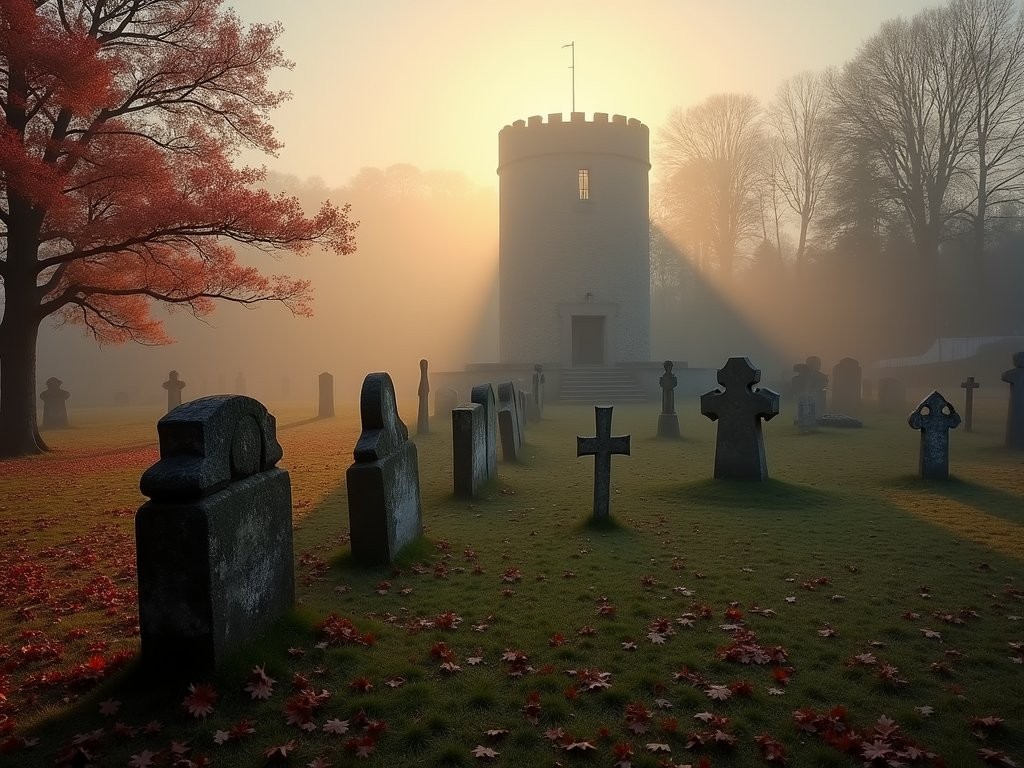
💡 Pro Tips
- Visit the monastic site at first light (before tour buses arrive) for clean shots without crowds
- Use a graduated ND filter when shooting across either lake to balance bright skies with darker foregrounds
- The boardwalk along the Upper Lake offers stable shooting positions even in muddy conditions
The Meditative Photographer: Finding Flow in the Wicklow Mountains
Photography and meditation have always been intertwined for me, but nowhere do they merge more completely than in the Wicklow Mountains. Here, among ancient hills that feel more like beings than geological features, I've discovered a photographic practice that's as much about presence as it is about pixels.
I call it "slow photography"—a deliberate approach that begins before the camera even leaves my bag. Each morning in the Wicklow Mountains, I start with a 20-minute meditation at my chosen location. This isn't just spiritual practice; it's practical photography technique. By quieting my mind and tuning into the landscape, I begin to notice subtle details that rushed photographers miss: how light plays across the heather, where fog lingers longest in valley pockets, which rocks create natural leading lines.
Some of my most meaningful images from the Wicklow Mountains came from spots where I initially saw "nothing to photograph." After sitting in stillness for a while, the landscape began revealing itself—not through dramatic vistas, but through intimate details and relationships between elements. A single weathered tree against the vast mountainscape. Morning dew catching light on spider webs stretched across gorse bushes. Ancient stone walls dividing fields into geometric patterns visible only from certain vantage points.
The Wicklow Military Road that winds through these mountains offers countless pullouts where you can safely park and explore. Rather than trying to photograph everything, I choose one small area and work it deeply. One memorable morning at the Sally Gap crossroads, I spent three hours photographing just a 50-yard stretch of road as changing light and passing clouds transformed it from ordinary pavement to a winding ribbon through a mythical landscape.
Lough Tay (often called the Guinness Lake for its dark waters and white sand beach resembling the famous stout) exemplifies the rewards of photographic patience. From the viewing point above, most tourists snap a quick shot and move on. I've learned to settle in and watch. Over hours, the lake's surface changes from mirror-like reflection to textured canvas as wind patterns move across it. Clouds cast moving shadows that race across surrounding hills, creating ever-changing compositions.
This meditative approach requires good preparation. My lightweight tripod has been worth every penny of its premium price—sturdy enough for long exposures yet light enough to carry on all-day hikes through the mountains. Equally important is physical comfort: a good sitting pad, layered clothing for changing conditions, and thermos of hot tea make the difference between a miserable wait and a transcendent experience.
The most valuable lesson the Wicklow Mountains have taught me is that extraordinary images rarely come from extraordinary effort—they emerge from extraordinary patience. When I finally press the shutter, it's not the beginning of the photographic process but rather its culmination—the natural conclusion to hours of watching, waiting, and being fully present with the landscape.
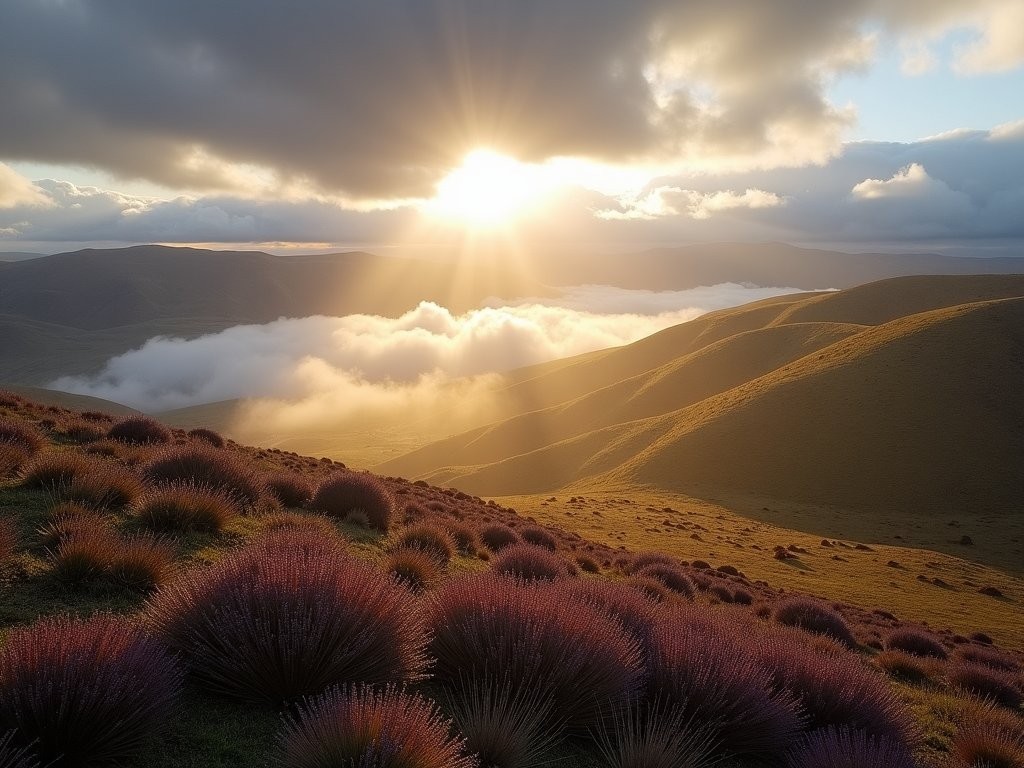
💡 Pro Tips
- Pack a lightweight foam sitting pad to stay comfortable during long waits for perfect light
- Use the 'PhotoPills' app to track sun position across the unique Wicklow topography
- Bring a thermos of hot tea or coffee—the mountain weather can change rapidly and staying warm helps maintain patience
Hidden Gems: Lesser-Known Photography Locations Between Dublin and Wicklow
While Glendalough rightfully claims photographic fame, the journey between Dublin and the heart of the Wicklow Mountains offers lesser-known locations that yield equally compelling images without the crowds. These spots have become my secret weapons for unique portfolio pieces that don't scream "tourist brochure."
The Great Sugar Loaf mountain near Kilmacanogue looks deceptively small from a distance but offers tremendous photographic potential. Unlike the rounded hills typical of Wicklow, its distinctive conical shape creates a natural focal point in wider landscapes. I've found that the approach from the Red Lane provides not just hiking access but multiple composition options where the mountain rises dramatically above pastoral scenes. Early morning here often brings low-lying fog that isolates the peak, creating an almost Himalayan feeling despite the modest 501-meter height.
The Vartry Reservoirs near Roundwood rarely feature in photography guides, which makes them perfect for original work. These twin bodies of water supply much of Dublin's drinking water, but photographically, they offer mirror-like reflections and beautiful shoreline trees that frame the water perfectly. The northern reservoir has a particularly photogenic valve tower that creates a strong vertical element against horizontal water. Visit at dawn when the water is calmest and mist often hovers just above the surface.
For woodland photography, Victor's Way Indian Sculpture Park near Roundwood offers something truly unexpected in the Irish countryside—a collection of black granite sculptures set within contemplative forest surroundings. The dark sculptures against green foliage create striking contrasts, especially in soft, diffused light after rain when the granite glistens. Note that the park has limited opening hours and sometimes closes for private meditation, so check ahead.
The abandoned lead mines at Glendasan (not to be confused with Glendalough) offer fascinating industrial ruins against mountain backdrops. The crumbling stone structures and rusted machinery provide perfect foreground elements for landscape compositions or compelling subjects for more detailed architectural studies. The site requires careful exploration and sturdy footwear, but rewards photographers with uniquely Irish combinations of industrial heritage and natural beauty.
Perhaps my most closely guarded secret spot lies along the Wicklow Way hiking trail between Crone Wood and Powerscourt. About 40 minutes into the hike from the Crone Wood car park, a small unmarked path leads to an overlook with panoramic views across the Glencree Valley all the way to Dublin Bay. On clear evenings, you can photograph the sunset over Dublin city in the distance while standing in mountain wilderness—a powerful juxtaposition of natural and urban Ireland in one frame.
For these off-the-beaten-path locations, navigation tools become essential. I rely on my handheld GPS which not only keeps me safely on track but records precise coordinates of promising compositions I discover while hiking. This allows me to return directly to exact spots when light conditions improve or seasons change.
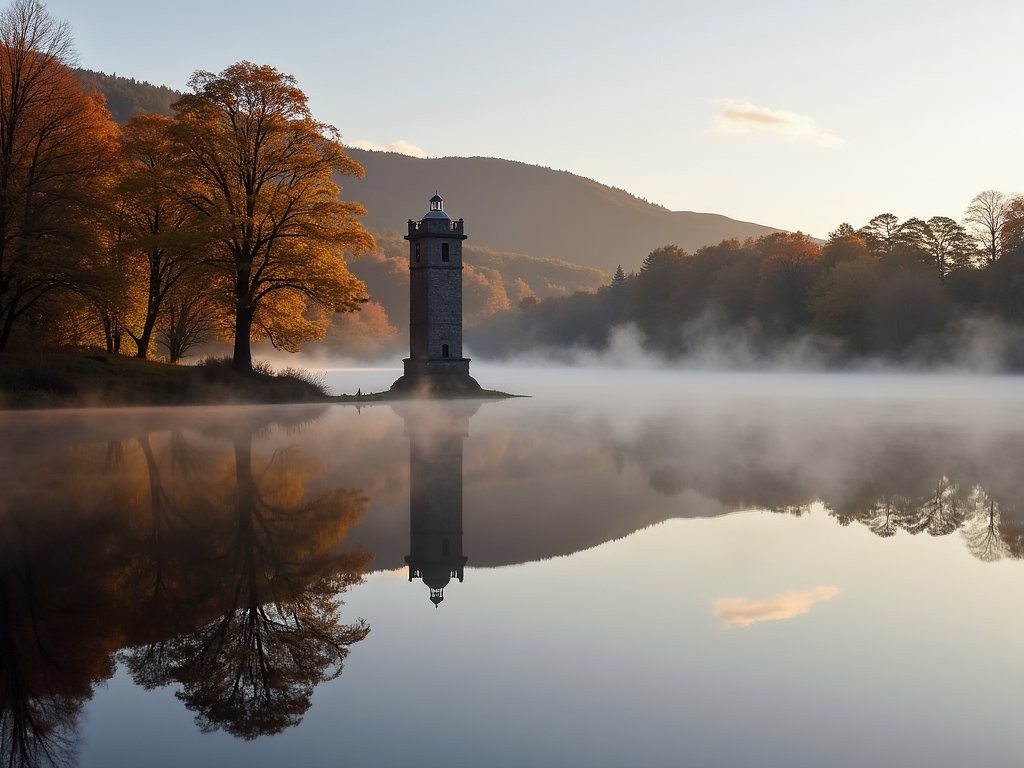
💡 Pro Tips
- Use the ViewRanger app with downloaded offline maps—cell service is spotty in many Wicklow valleys
- Always carry printed maps as backup—the Ordnance Survey Ireland Discovery Series Map #56 covers most of the Wicklow Mountains
- For hidden locations, arrive early and photograph quickly if other photographers appear—nothing stays secret for long in the Instagram age
Connecting with Local Photographers: The Human Element of Irish Photography
Some of my richest Irish photography experiences have come not from locations but from connections with local photographers who've shared their knowledge, stories, and sometimes even secret spots that no guidebook would reveal.
On my first solo trip after losing my wife, I was photographing in Glendalough, struggling with both technical challenges and personal emotions. An elderly Irishman with a well-worn Leica approached, noted my frustration, and simply said, "The light always changes, lad. That's the only certainty." What followed was a two-hour impromptu masterclass in Irish landscape photography—and life philosophy—that transformed not just my images but my entire approach to photography as healing.
Since then, I've made connecting with local photographers a priority on every Irish journey. Dublin's Gallery of Photography in Temple Bar holds regular exhibitions and events where photographers gather. Attending an opening night there introduced me to members of the Dublin Camera Club, who later invited me on their weekend field trip to locations I would never have discovered independently.
Social media has made finding these connections easier. Before each trip, I search Instagram location tags for recent outstanding images from my planned destinations, then respectfully message the photographers. While not everyone responds, those who do have been incredibly generous. One Dublin street photographer showed me how certain alleys in the Liberties neighborhood create perfect natural light tunnels at specific hours. A Wicklow-based landscape specialist shared precise GPS coordinates for compositions that work specifically in autumn light.
The most valuable connection came through an unexpected source—a bartender at The Long Hall pub who noticed my camera and mentioned his brother ran photography workshops. This led to spending a day with Seamus, a third-generation shepherd who photographed the Wicklow Mountains while tending his flocks. His intimate knowledge of how weather moves through specific valleys helped me anticipate and position for dramatic light breaks that seemed almost magically timed.
These connections offer more than technical tips—they provide cultural context that deepens my images. Learning why certain landscapes hold significance to locals, hearing the folklore associated with rock formations, understanding the historical importance of ruins—these insights transform mere pretty pictures into visual stories with authentic Irish soul.
For photographers seeking similar connections, respect is essential. I always offer to buy coffee or a pint in exchange for advice rather than expecting free guidance. I share my own knowledge from American photography experiences. And critically, I respect when locals don't wish to reveal exact locations of special spots—the Wicklow Mountains face increasing pressure from social media-driven tourism, and some photographers understandably protect fragile or uncrowded locations.
Most importantly, these connections have given me something beyond better images—they've provided friendship during what began as a solitary healing journey. When Emma joins me now, these Irish photographers welcome her like family, creating intergenerational bonds that make our visits feel less like tourism and more like coming home.
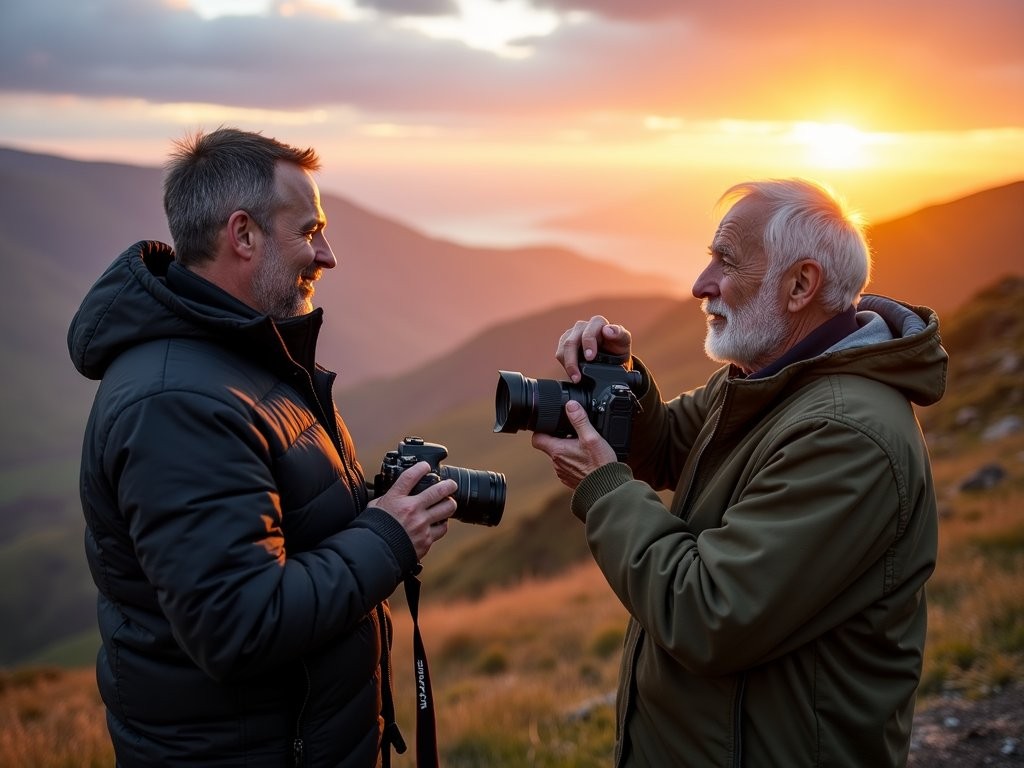
💡 Pro Tips
- Join photography Facebook groups specific to Ireland before your trip to make connections
- Bring small prints of your home region's landscapes as gifts when meeting local photographers
- Visit Dublin's Camera Centre shops—staff often know the local photography community and upcoming events
Final Thoughts
As I pack my gear on the final morning, carefully wrapping my memory cards that now hold gigabytes of Irish soul, I realize that photography in Ireland has never really been about the perfect image. It's been about the journey—both external through magnificent landscapes and internal through quiet moments of connection with something ancient and enduring. The Wicklow Mountains have taught me that sometimes the best photographs happen when we stop trying so hard to make them happen. When we instead allow ourselves to be fully present, to breathe with the rhythm of the hills, to wait with monastic patience for light to reveal what was always there. Whether you come to Ireland as a professional with top-tier gear or simply carrying a smartphone with a decent camera, the same invitation awaits: slow down, look deeply, and allow Ireland to photograph itself through your lens. The images you'll create here will be more than pretty pictures—they'll be touchstones that transport you back to moments when, perhaps for just a fraction of a second, you felt completely alive and connected to something greater than yourself. Isn't that, after all, why we press the shutter in the first place?
✨ Key Takeaways
- Plan photography sessions around Ireland's dramatic and rapidly changing light conditions rather than specific locations
- Incorporate meditation and mindfulness into your photography practice for more meaningful and unique images
- Connect with local photographers for insider knowledge that transforms good images into exceptional ones
- The journey between famous locations often yields more original compositions than the landmarks themselves
📋 Practical Information
Best Time to Visit
Mid-September to late October for optimal fall colors and atmospheric conditions
Budget Estimate
$1,500-2,500 for a week (including mid-range accommodation, car rental, and meals)
Recommended Duration
7-10 days minimum to allow for weather changes and unhurried photography
Difficulty Level
Moderate To Challenging (Requires Good Physical Condition For Mountain Locations)
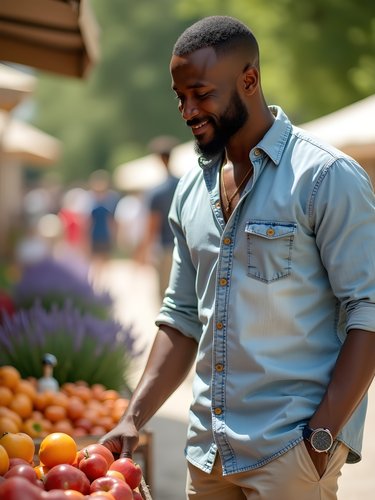
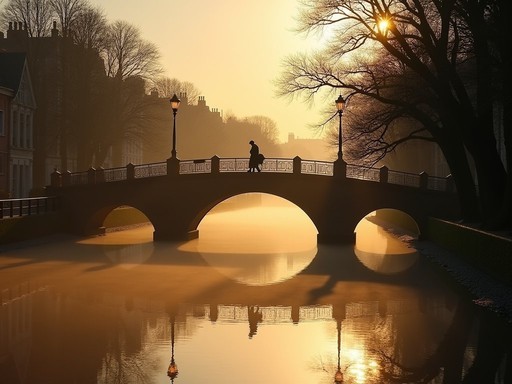
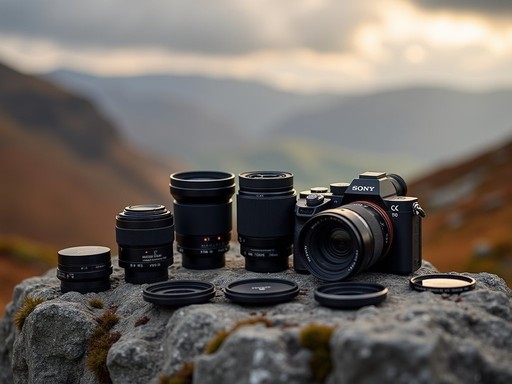
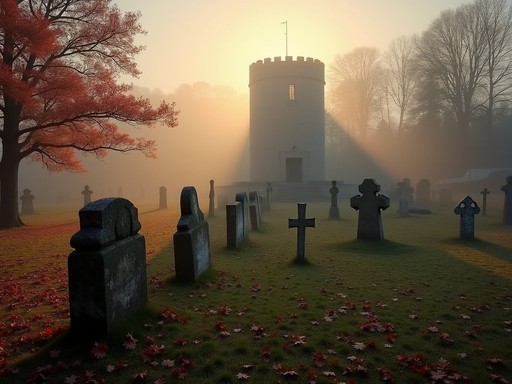

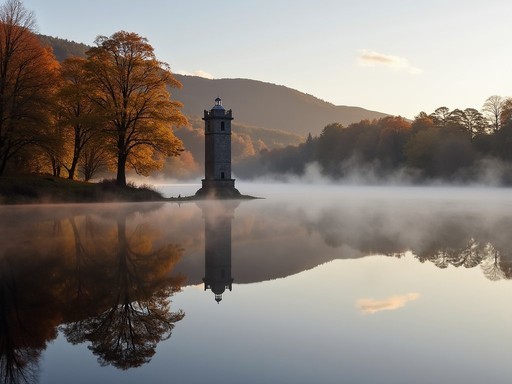
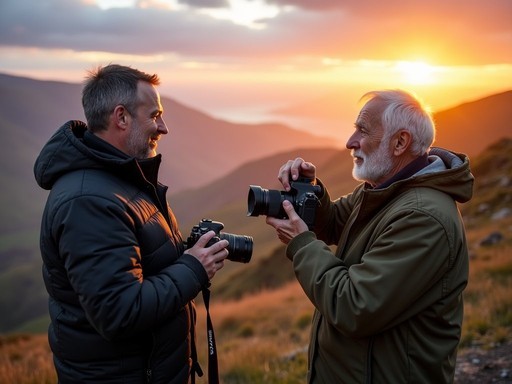








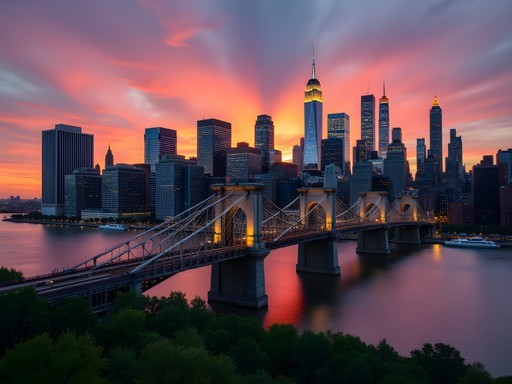
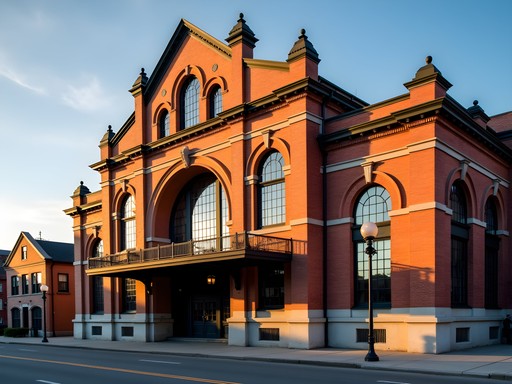
Comments
dreamperson
Your Dublin shots are so different from the typical tourist photos! Did you have specific locations planned or just wander? I'm going in October and want to capture something beyond the usual Temple Bar shots!
Lars Robinson
Thanks! I actually had a mix of planned spots and random wandering. The Grand Canal at dawn is magical and usually empty. Also check out the little alleyways off Drury Street. My best shots always come from just getting lost for a few hours!
dreamperson
Grand Canal at dawn - adding it to my list! Thank you so much!
sunsetace7450
I second the Grand Canal recommendation. Also check out the Iveagh Gardens - way less crowded than St. Stephen's Green but just as photogenic!
Jean Wells
Lars, your section on 'The Technical Side: Gear and Settings for Irish Light' was exactly what I needed. I've struggled with Ireland's constantly changing light conditions on my past two trips. The soft box clouds create such beautiful diffusion one moment, then harsh contrasts the next! I found your graduated ND filter technique particularly helpful. I'm heading back to the Wicklow Mountains this November - did you find early morning or late afternoon more productive for those mountain landscapes? My travel tripod is already packed!
Lars Robinson
Thanks Jean! For Wicklow specifically, I preferred early mornings. The valley fog creates this incredible layered effect when the sun first hits. November will give you amazing low light angles too. Bring extra batteries - the cold drains them quickly!
Jean Wells
Extra batteries - noted! Did you have any issues with condensation when moving between warm cars and cold exteriors?
Lars Robinson
Absolutely - I keep my gear in a sealed bag for 15-20 minutes after leaving the car to let it acclimate gradually. Saved me more than once!
sunsetace7450
Those shots of Glendalough are incredible! The way you captured the light filtering through the ruins is something else.
dreamperson
Right?? I've been there twice and never managed to get that golden light. What time of day was this shot, Lars?
Lars Robinson
Thanks both! @dreamperson I was there just after sunrise, around 7:30am in late September. The key was getting there before the tour buses!
GlobeTrotter365
Your post just convinced me to add Ireland to my fall travel list! Those colors are unreal.
PhotoNewbie
Those mist shots are incredible! What settings did you use?
Lars Robinson
For the misty shots, I typically used f/8, ISO 100-400 depending on light, and played with longer exposures (1/15-1/4 sec) to give the mist that ethereal quality. Tripod was essential!
HikingEnthusiast
If anyone's planning a similar trip, don't miss the Spinc trail above Glendalough. It's a bit challenging but the views for photography are absolutely worth it. Bring good hiking boots though - it gets slippery after rain!
blueseeker
Thanks for the tip! How long does that trail take? I'm adding it to my list!
HikingEnthusiast
It's about 4 hours round trip if you take your time for photos. Start early to avoid crowds!
TravelingLens
Great post! What was your favorite lens for the landscape shots in Wicklow?
Lars Robinson
I found myself using my 16-35mm f/4 for about 80% of the landscape work. The wide angle really helps capture that sense of scale in the mountains!
IrishRoamer92
As a local, you've captured our mountains beautifully! Love seeing my home through fresh eyes.
Sophia Gomez
Lars, your post brought me right back to my own journey through Wicklow last fall! There's something about that Irish light that's impossible to describe until you've experienced it firsthand. I love how you captured the transition from Dublin's urban energy to Wicklow's ancient tranquility. I had a similar experience with the changing weather patterns - started with my weather-sealed lens but ended up switching to prime lenses for those moody misty shots in the mountains. Your section on finding meditative flow while shooting really resonated with me. Photography in Ireland does feel more like a conversation with the landscape than just taking pictures of it. Did you make it to Powerscourt Gardens? That's another photographer's paradise, especially with the autumn colors!
Lars Robinson
Thanks Sophia! I did make it to Powerscourt but only had about an hour there - definitely deserved more time. The Japanese gardens were stunning with the fall colors. Your work in Kerry last year was a big inspiration for this trip, by the way!
blueseeker
Those shots of Glendalough look incredible! What time of day did you visit to get that light? I'm heading to Ireland next month and would love to recreate something similar.
Lars Robinson
Thanks! I shot most of those around golden hour, about 1-2 hours before sunset. The light hits the valley at just the perfect angle then. Early morning works too if you can brave the cold!
blueseeker
Perfect, thanks! I'll set my alarm early then. Any specific viewpoints you'd recommend?
Lars Robinson
The upper lake trail gives you amazing elevation for those wide shots. There's a spot about 15 minutes up where the whole valley opens up - you can't miss it!
Venture X
Premium card with 2X miles, $300 travel credit, Priority Pass